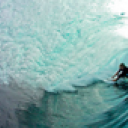Will the Leeuwin current be affected by the el nino?


.


http://www.oceanclimatechange.org.au/content/images/uploads/Leeuwin_Curr...
This isn't the article I spoke of above , but it does give you a better summary of what I tried to communicate about the variability in the Leeuwin Current from ENSO , SAM and IOD .


Hey caml, you wouldn't happen to know the signwriter who used to surf Cove would you?


I'm just trying to figure out who you are. I grew up in Mosman park, old man is the signwriter and surfed cove a lot through the 70s to 90s.


.


It has been a weak current the year based on Spanish mackerel numbers


.


uncle_leroy wrote:It has been a weak current the year based on Spanish mackerel numbers
Are you talking Perth Mackies Uncle Leroy ?


yeah blowin
got a few macks mid Feb as metro you can get, two days only then gone
didn't even see any last trip north 2.5hrs of Perth and water a cool 22.4 deg
probably one last rush to come though
Salmon already starting to move in numbers south coast so I hear


This chap (he is also one of the authors of Southeys link) seems to have a bunch of info on the Leeuwin current some with respect to el nino and la nina events, here is one such link : http://www.per.marine.csiro.au/staff/Ming.Feng/Climate_impact2.htm
In essence what he has found is the following :-
* The feeder to the Leeuwin current is the Indonesian throughflow which rounds Nusa Tengara and heads SW. Part of its flow joins the South Equatorial current which heads West. The semi annual South Java Current also mixes in the region as it heads SE from Sumatras west coast down under Java. How these feeder currents behave, what portion splits into the South equatorial current Vs Leeuwin current, known upwelling events off Sumatra etc have an impact on the behaviour of the Leeuwin current.
* The maximum velocity of the Leeuwin current is in April off Rotto
* The maximum volume movement of the Leeuwin Current is in June
* Mean volume is measured as about one million cubic meters per second
* Ekman transport (local winds) has a weak impact on the current
* The Leeuwin Current is weaker in summer and stronger in winter
* The Leeuwin current exerts a pressure force on the continental shelf. Hence in summer when it is weak lower sea levels are seen in Freo, and in Winter when it is stronger, higher sea levels in Freo are found.
* Due to this last point the Fremantle Sea level has been used as an index for determining a strong or weak Leeuwin Current (it would be interesting to see how a historical sea level table would correlate with el nino events)
* During an El Nino the Indonesion throughflow current and the Leeuwin current become weaker, with the contrary during a la nina
* Sea surface temperature is slightly higher and the surface mixed layer and thermocline depths are deeper during La Nina. The opposite has been recorded in El nino years
Full details and graphs/charts etc are in the article, this Is just a summary and for some probably general knowledge (not for me though).
On a related note we had a couple days of Northerlies several weeks back, I hit the south coast and they had strong SE to SW winds for the week before, and the water was chilly man, even for the south coast locals who were in boardies the week before.


There's a dirty bank all the way to rotnest . forget whats it called l..so much ocean all u need is flipper and a squids


JY . Well done discovering Feng.
Just remember though this is vet early days in Indian Ocean analysis .
The ITF ( Indonesian Through Flow ) is primarily governed by sea height differentials between the Pacific and Indian . Hence La Niña and ( Northern Hem ) spring tides are the biggest kick start to it's strength . The IOD ( the Indian oceanic version of ENSO ) - East West trade anomalies are also a strong influence . As this governs a few of the Indian ocean Equatorial water flows , including the balance between the South Equatorial current and the Sth Java current ( which are driven by the IOD ( Indian Ocean Dipole ) . Water salinity and land runoff is also involved in the ITF .
Shoes have swapped In regards to who is anonymous . Enjoy it while it lasts ! Lol
Ekmans major input is how the day to day surface atmospherics influence the currents distance from shore , and daily speed . Volume is due to seasonal influences , but just like the EAC daily and weekly variations influence eddies and mixing . Local SST anomalies influence atmospherics which inturn influence weekly current flow patterns . So chicken and egg . Feng has done well to capture the essence of obs . Indepth enough to help aquaculture endeavors , comprehensive analysis is far off to read of infinite controls and influence . Momentum is one thing , but steering is complex , the fact it hugs the coast is not a coincidence and Coriolis coupled with atmospheric influence is primary to its continuation . Otherwise we wouldn't see a warm current for both sides of Aust . The contiental land mass and its specific complexities add great reason to seeing a western coastline poleward current . It's the strongest amongst only two other significant occurrences on such on earth . The other is what keeps western Europe from being an ice block . And which like the leeuwin originates from a cross Equatorial return path flow . Both being the exhaust of the most influential climate drivers on the planet . Which guarantees that we are far from fully understanding / forecasting , but thankful that its importance has seen such a strong level of analysis . . Sorry to get Boring .


.


.


thanks Southey, always appreciate your thoughts on the ITF and hence LC.
What do you mean by this?: "Water salinity and land runoff is also involved in the ITF ."
Do you mean monsoonal run-off?


Caml have you thought of doing an Austudy course online re weather/ocean etc, Austudy is available up to 65yrs of age ,surf all day study after hours ...could see you really enjoying something like that. ?


Caml it's amazing what you can pick up when you're interested and also when you can really picture how it applies to your own life experiences.
I reckon mature age students have an advantage over the kids just out of school in the above regards and also because they're not generally out on the piss every night! Ruined many a potential graduate I'm sure.
I'm 43, just started a degree - never too old.


Thanks for the technical detail, Southey - interesting to read. Not easy to grasp though.


Dyldo83 wrote:I'm just trying to figure out who you are. I grew up in Mosman park, old man is the signwriter and surfed cove a lot through the 70s to 90s.
Hi Dylan, I know your dad very well, say g'day from Dougo


freeride76 wrote:thanks Southey, always appreciate your thoughts on the ITF and hence LC.
What do you mean by this?: "Water salinity and land runoff is also involved in the ITF ."
Do you mean monsoonal run-off?
yeah FR . I'm not technically around that , but yes fresh water injection etc influences the flows , turbidity ? and stratification of waters as they pass through the narrower passages of the ITF .
The more i read on this topic of IOD - ENSO tele-connections the more i see importance in understanding its intracacies . Unfortunately its like a twisted ball of fishing line . ( Who's got time for that )lol
The whole INDO region works as 4 way valve with two valves being fluid and the other atmospheric .
And as such i'm starting to think if the Equatorial Pacific is the Earths' thermostat then i'm going to coin the term that this region is the Earths Heat/ Pump - Airconditioner . Not just temperature but humidity control .
You have the Indian Ocean and the Pacific Ocean Diagonally opposite forming the fluid connection and then continental China and the Austral continent on the other corners giving land mass influenceing atmospherics . You only have to look for signals like strong Highs forming over China to see a warning that the Northern Australian Monsoon is going to receive large amounts Equatorial cross flow via the Sth China Sea and really ramping up MJO pass through this sector .
This is the easiest and shortest connection that can be used as weather tell tale . The climate and seasonal through to decadel influences are much more complex . But i'm relatively certain that most of " the ANSWERS " to climate patterns are to be found in this region . We know that strong atmospheric MJO passes from the Indian to Western - Central Pacific trigger El Nino's .
To date the best explanations of some of these tele connections have been made by Bob Tisdale . His work is well worth a read , as he cuts out a lot of the Jargon you find in most official papers .


caml wrote:Solar power on my caravan is how I charge my phone by the way
We need a like button !


Yeah our west coast (tassie) is sitting around 18-19 deg up a couple of degrees on average. And have assumed that was because of a strong LC?


This is an interesting topic. I would like to know if the warmer-than-normal sea surface temperatures in the Leeuwin current caused damage to corals and fisheries after the El Nino phase?


Abrolhos islands Hope Spot
https://www.mission-blue.org/2017/07/houtman-abrolhos-islands-announced-...
https://thewest.com.au/news/geraldton-guardian/abrolhos-status-in-world-...
"The Abrolhos were recently recognised as a world-class marine-protected area by conservation coalition Mission Blue, as part of a global campaign to protect the world’s oceans and raise awareness of unique marine habitats."
“We’ve got to make sure the community understands what it means to have a Hope Spot in its backyard and to make sure they are engaged in an appropriate way.”
Mr Bradley said it was vital that growing tourism interest in the Abrolhos was managed carefully so the islands would not become overrun with tourists with no interest in caring for the special environment."


https://www.mission-blue.org/2017/07/houtman-abrolhos-islands-announced-...
"The Houtman Abrolhos Islands, an A-Class marine reserve 60km off the coast of Geraldton in Western Australia, have been recognised as an ocean Hope Spot by ocean conservation organisation Mission Blue, joining 85 other sites globally and one other in Australia – Moreton Bay in Queensland.
The Mission Blue Hope Spot program, led by legendary oceanographer Dr Sylvia Earle, is a global campaign to build public awareness, support and, where necessary, protection for special places that are vital to the health of the ocean.
Often described as the Galapagos Islands of the Indian Ocean, there are few places in Australia wilder and with more biodiversity than the remote Houtman Abrolhos Islands. The islands provide substantial economic, scientific and social benefits to the Western Australian community, including commercial fisheries for rock lobster, scallops and finfish; pearl aquaculture; recreational fishing; marine-based activities; bird watching and a developing tourism industry. However, they are not immune to significant potential threats such as warming waters and ocean acidity.
The nomination of the Houtman Abrolhos Islands was jointly made by Regional Development Australia Mid West and Gascoyne (RDAMWG), whose mandate is to deliver a program of economic development across the region, and the Western Australian Ocean Foundation (WAOF), whose mission is to facilitate the continuous improvement in the health of the oceans of Western Australia.
WAOF Chair and Co-Founder, Mr Grant Oldfield, added “Western Australians are blessed with oceans teeming with biodiversity which, in turn, enrichen our lives and support our livelihoods. WAOF has been formed to facilitate greater community involvement in, and understanding of, the health of our oceans, as there is no doubt that they will become increasingly important to our economy and quality of life”.
“We couldn’t be more thrilled to announce Mission Blue’s second Hope Spot off the coast of Australia,” said Laura Cassiani, Executive Director of Mission Blue. “The Houtman Abrolhos marine reserve is a shining example of conservation and sustainability in some of Australia’s most pristine waters. We look forward working with the communities in the area to shine a light on this special marine ecosystem and promote sustainable ecotourism in the area.”
The announcement of Houtman Abrolhos Islands as a global Hope Spot will be made by Gigi Brisson, Emeritus Director at Mission Blue, at Sir Richard Branson’s Necker Island at the end of July 2017, where technology experts are gathering for a global Blockchain summit."


https://www.nature.com/articles/srep01277
"The interannual SST warming off the west coast of Australia may be termed a “Ningaloo Niño”, in analogy to other eastern boundary current warming phenomena such as El Niño in the Pacific and Benguela Niño in the Atlantic. Ningaloo Reef off the North West Cape of Australia is famed for its rich corals, whale sharks, and other marine life, and the reef and surrounding area are listed as world heritage by the United Nation. It is also the source region of the Leeuwin Current. Derived from the aboriginal Gnulli language, Ningaloo means promontory (Source: Australian Geographic October-December 2006), shaped like a beckoning finger of nearly 200 km long and jutting into the Indian Ocean (Fig. 4c). Due to the low latitude pathway from the Pacific to the Indian Ocean17,45, a Ningaloo Niño often occurs during a La Niña event of the Pacific when the easterly winds in the equatorial western Pacific drive a stronger Leeuwin Current transport18. Ningaloo Niño, represented by SST averaged in the area of 32–26°S, 112–115°E, is moderately correlated with SOI at 0.35 for the period of 1980–2011. Other processes, such as air-sea heat fluxes and upper ocean heat storage are important for the amplitude of the Ningaloo Niño SST variability19. The 2011 marine heat wave is a rather unique Ningaloo Niño event due to the unusual alignment of intraseasonal to interdecadal processes, resulting in an unseasonable surge of the Leeuwin Current and the extreme warm condition in austral summer 2011."


Ha, Abrolhos islands and Abrolhos banks, two different spots in two different oceans.


jamyardy thanks for the correction, that was a major slip up !


ITF is starting to swing / pull up this Positive IOD . And I would suggest with cool upwelling continiuning in the central East Equatorial Pacific that as we build back into La Niña territory that the influences in Australian weather are heading towards neutral and may even reach wet signal status before the start of summer and the just before the end of the IOD 's influence .


So you're predicting a wetter than normal oz southey? East coast aus appears to have the ingredients for a wet summer with higher than average ocean temps with the east coast current pushing further south. However hard to tell with winter cold fronts still persisting at moment


Interested to here your thoughts Southy.
As loath as I am to poach the headlines of the dailies , but the East coast - where i am at least - looks like a tinderbox ready to ignite.


Blowin , as long as the SAM/ AAO don't stay strong into late spring like it de last year well into summer . Then you should see a change towards wetter weather soon . The AEC is already pumping , as soon as these La Niña ingredients filter west into the central west pacific we should see good moisture infeed from the East . Local instability or disturbances /troughs coming from over in the NW . Will help trigger something worth while . But these string fronts are not helping your cause ATM .


Cheers mate.


Your welcome


Currently the ocean temps are warm in the bight and the la nina conditions may have delivered this flow .
Has anyone else noticed this ?
Graphs are showing over 20-21 degrees in the eastern bight .


Hey Clam, I noticed the South Coast waters were super warm as well compared to normally, seemed around 21.
But La Nina is related to warm water in the Coral Sea and Western Pacific, and the main reason for me would be the lack of strong and persistent SE-SSE winds which bring upwelling.

Will the Leeuwin current be affected by the el nino ? Have read that the current is weaker at the moment